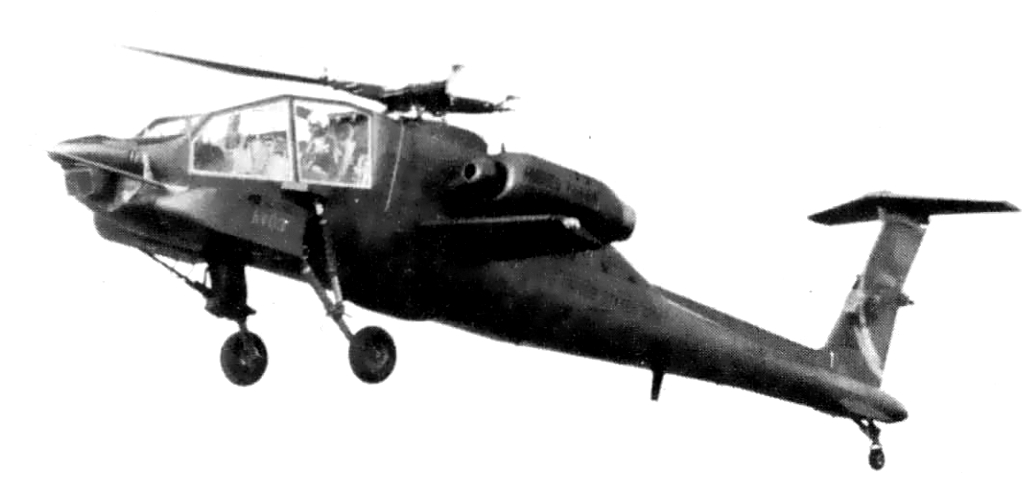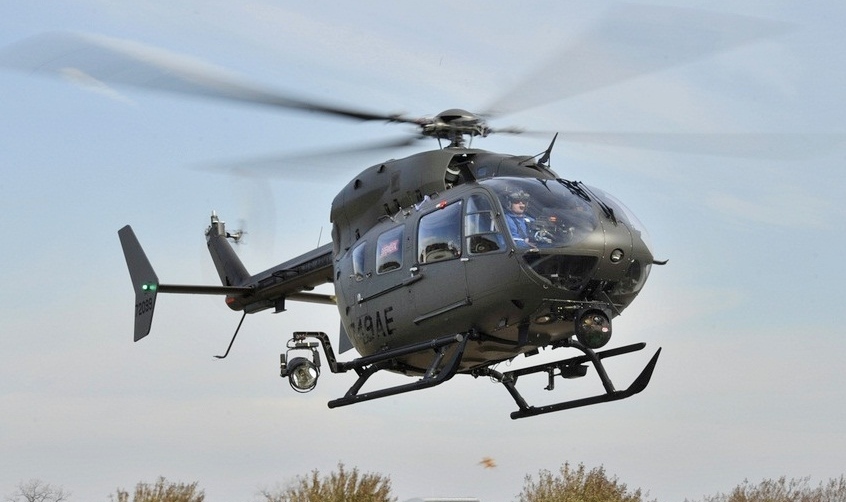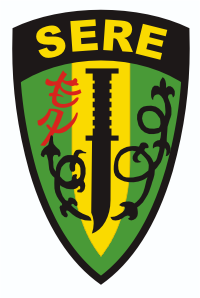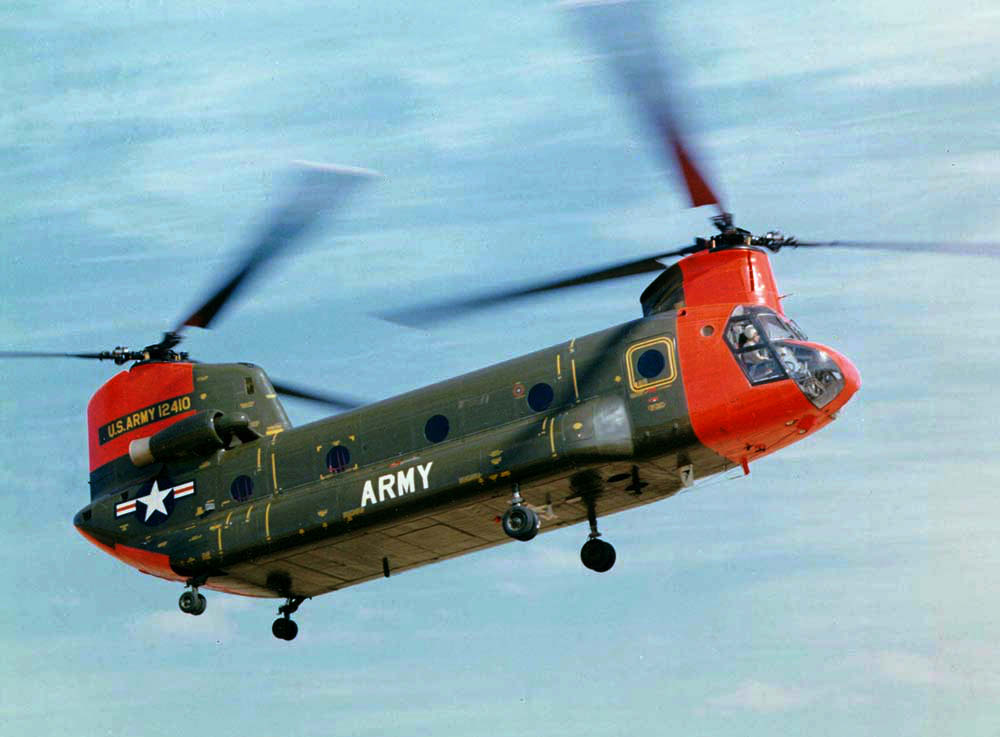|
United States Army Aviation School
The U.S. Army Aviation Center of Excellence, formerly known as the Army Aviation Center and School, is the United States Army Aviation Branch's headquarters and training and development center, located at Fort Rucker, Alabama. It coordinates and deploys aviation operations and trains aviation officers in a variety of topics, including navigation and classroom instruction, aircraft and helicopter piloting, and basic combat. Its commanding general is Major General Michael C. McCurry II. The Center of Excellence includes three aviation brigades, the 1st Aviation Brigade, 110th Aviation Brigade, and 128th Aviation Brigade, various Army tenant organizations, and a Non-commissioned Officers' Academy. History Most training of pilots and mechanics for World War II army aviators was conducted by the Department of Air Training within the Field Artillery School at Henry Post Army Airfield, Oklahoma, although the Army Air Forces conducted some primary training of Army Aviation personne ... [...More Info...] [...Related Items...] OR: [Wikipedia] [Google] [Baidu] |
Fort Rucker
Fort Rucker is a U.S. Army post located primarily in Dale County, Alabama, United States. It was named for a Civil War officer, Confederate General Edmund Rucker. The post is the primary flight training installation for U.S. Army Aviators and is home to the United States Army Aviation Center of Excellence (USAACE) and the United States Army Aviation Museum. Small sections of the post also lie in Coffee, Geneva, and Houston counties. Part of the Dale County section of the base is a census-designated place; its population was 4,636 at the 2010 census. The main post has entrances from three bordering cities, Daleville, Ozark and Enterprise. In the years before the September 11, 2001 attacks, the main post (except airfields and other restricted areas) was an open post with unmanned gates allowing civilians to drive through. Following the attacks, this policy was changed, and the post is now closed to unauthorized traffic and visitors. It is one of the U.S. Army installations ... [...More Info...] [...Related Items...] OR: [Wikipedia] [Google] [Baidu] |
AH-64 Apache
The Boeing AH-64 Apache () is an American twin-turboshaft attack helicopter with a tailwheel-type landing gear arrangement and a tandem cockpit for a crew of two. It features a nose-mounted sensor suite for target acquisition and night vision systems. It is armed with a M230 chain gun carried between the main landing gear, under the aircraft's forward fuselage, and four hardpoints mounted on stub-wing pylons for carrying armament and stores, typically a mixture of AGM-114 Hellfire missiles and Hydra 70 rocket pods. The AH-64 has significant systems redundancy to improve combat survivability. The Apache began as the ''Model 77'' developed by Hughes Helicopters for the United States Army's Advanced Attack Helicopter program to replace the AH-1 Cobra. The prototype YAH-64 was first flown on 30 September 1975. The U.S. Army selected the YAH-64 over the Bell YAH-63 in 1976, and later approved full production in 1982. After purchasing Hughes Helicopters in 1984, McDonnell ... [...More Info...] [...Related Items...] OR: [Wikipedia] [Google] [Baidu] |
Ernest F
Ernest is a given name derived from Germanic word ''ernst'', meaning "serious". Notable people and fictional characters with the name include: People * Archduke Ernest of Austria (1553–1595), son of Maximilian II, Holy Roman Emperor * Ernest, Margrave of Austria (1027–1075) *Ernest, Duke of Bavaria (1373–1438) * Ernest, Duke of Opava (c. 1415–1464) *Ernest, Margrave of Baden-Durlach (1482–1553) *Ernest, Landgrave of Hesse-Rheinfels (1623–1693) *Ernest Augustus, Elector of Brunswick-Lüneburg (1629–1698) *Ernest, Count of Stolberg-Ilsenburg (1650–1710) * Ernest Augustus, King of Hanover (1771–1851), son of King George III of Great Britain *Ernest II, Duke of Saxe-Coburg and Gotha (1818–1893), sovereign duke of the Duchy of Saxe-Coburg and Gotha *Ernest Augustus, Crown Prince of Hanover (1845–1923) *Ernest, Landgrave of Hesse-Philippsthal (1846–1925) *Ernest Augustus, Prince of Hanover (1914–1987) *Prince Ernst August of Hanover (born 1954) * Prince Erns ... [...More Info...] [...Related Items...] OR: [Wikipedia] [Google] [Baidu] |
James S
James is a common English language surname and given name: *James (name), the typically masculine first name James * James (surname), various people with the last name James James or James City may also refer to: People * King James (other), various kings named James * Saint James (other) * James (musician) * James, brother of Jesus Places Canada * James Bay, a large body of water * James, Ontario United Kingdom * James College, a college of the University of York United States * James, Georgia, an unincorporated community * James, Iowa, an unincorporated community * James City, North Carolina * James City County, Virginia ** James City (Virginia Company) ** James City Shire * James City, Pennsylvania * St. James City, Florida Arts, entertainment, and media * ''James'' (2005 film), a Bollywood film * ''James'' (2008 film), an Irish short film * ''James'' (2022 film), an Indian Kannada-language film * James the Red Engine, a character in ''Thomas the Tank En ... [...More Info...] [...Related Items...] OR: [Wikipedia] [Google] [Baidu] |
Bogardus Snowden Cairns
Bogardus Snowden "Bugs" Cairns (February 14, 1910 – December 9, 1958) was a U.S. Army cavalry officer who served as the Commanding General of Fort Rucker, Alabama, and as Commandant of the Army Aviation School in 1957–1958. He was one of the key developers of the armed helicopter and the first to formally apply cavalry doctrine to Air Mobility. After his death in a helicopter crash while serving at Fort Rucker, Ozark Field was renamed Cairns Army Airfield in January 1959. He was en route to Matteson Range to observe a firepower rehearsal in preparation for a full-scale armed helicopter display. Early life Major General Cairns was born to a career Army doctor, Lieutenant Colonel Douglas Walker Cairns and Ethel Moore Cairns, on February 14, 1910, in Brooklyn, New York. His father, Lt.Col. Cairns, went on active duty during the First World War, beginning over 100 years of unbroken active duty service of the Cairns progeny. Dr. Cairns was with Gen. John J. "Blackjack" Pershin ... [...More Info...] [...Related Items...] OR: [Wikipedia] [Google] [Baidu] |
Carl I
{{hndis, Carl I ...
Carl I may refer to: * Carl VII of Sweden (ca. 1130–1167), actually the first historically known Swedish Charles. * Carl I of Norway (1409–1470), VIII of Sweden. See also *Charles I (other) Charles I may refer to: Kings and emperors * Charlemagne (742–814), numbered Charles I in the lists of Holy Roman Emperors and French kings * Charles I of Anjou (1226–1285), also king of Albania, Jerusalem, Naples and Sicily * Charles I of ... [...More Info...] [...Related Items...] OR: [Wikipedia] [Google] [Baidu] |
Eurocopter UH-72 Lakota
The Eurocopter (now Airbus Helicopters) UH-72 Lakota is a twin-engine helicopter with a single, four-bladed main rotor. The UH-72 is a militarized version of the Eurocopter EC145, built by American Eurocopter (now Airbus Helicopters, Inc.), a division of Airbus Group, Inc. Initially marketed as the UH-145, the helicopter was selected as winner of the United States Army's Light Utility Helicopter (LUH) program on 30 June 2006. In October 2006, American Eurocopter was awarded a production contract for 345 aircraft to replace the aging Bell UH-1H/V Iroquois and Bell OH-58A/C Kiowa helicopters in the US Army and Army National Guard fleets. The UH-72 performs logistics and support missions within the US for homeland security, disaster response missions, and medical evacuations. Development Background The U.S. Army's ''LHX'' program began in the early 1980s, proposing two helicopter designs with a high percentage of commonality of dynamic components. One was a light utility versi ... [...More Info...] [...Related Items...] OR: [Wikipedia] [Google] [Baidu] |
Survival, Evasion, Resistance, And Escape
Survival, Evasion, Resistance, and Escape (SERE) is a training program, best known by its military acronym, that prepares U.S. military personnel, U.S. Department of Defense civilians, and private military contractors to survive and "return with honor" in survival scenarios. The curriculum includes survival skills, evading capture, application of the military code of conduct, and techniques for escape from captivity. Formally established by the U.S. Air Force at the end of World War II and the start of the Cold War, it was extended to the Navy and United States Marine Corps and consolidated within the Air Force during the Korean War with greater focus on "resistance training." During the Vietnam War (1959–1975), there was clear need for "Jungle" survival training and greater public focus on American POWs. As a result, the U.S. military expanded SERE programs and training sites. In the late 1980s, the U.S. Army became more involved with SERE as Special Forces and "Spec Ops ... [...More Info...] [...Related Items...] OR: [Wikipedia] [Google] [Baidu] |
United States Aviator Badge
A United States Aviator Badge refers to three types of aviation badges issued by the United States Armed Forces, those being for Air Force, Army, and Naval (to include Marine and Coast Guard) aviation. Air Force and Army Aviator Badges are issued in three ratings: Basic, Senior, and Command (Air Force)/Master (Army). The higher degrees are denoted by a star or star with wreath above the badge. Air Force regulations state that the basic rating denotes completion of specified training and that the advanced ratings denote experience levels. The Naval Aviator Badge is issued in a single rating for Navy, Marine Corps, and Coast Guard aviators. United States Air Force World War I The first United States Aviator Badges were issued to members of the Air Service during World War I. The badges were issued in three degrees: Observer (a "US" shield and one left-side wing), Junior Aviator or Reserve Aviation Officer (a "US" shield between two wings), and Senior Aviator (a star over "US" ... [...More Info...] [...Related Items...] OR: [Wikipedia] [Google] [Baidu] |
110th Aviation Brigade
The 110th Aviation Brigade is an aviation brigade of the United States Army conducting all flight training under the United States Army Aviation Center of Excellence at Fort Rucker, Alabama. It consists of a Headquarters, an academics section, a night vision device section, four subordinate battalions, and an Army Reserve Augmentation Brigade Headquarters: * 1st Battalion, 11th Aviation Regiment * 1st Battalion, 14th Aviation Regiment, Hanchey Army Heliport (AH-64D/E) * 1st Battalion, 212th Aviation Regiment, Lowe Army Heliport and Shell Army Heliport (UH-60A/L/M & OH-58C) * 1st Battalion, 223rd Aviation Regiment, Cairns Army Airfield and Knox Army Heliport (CH-47D/F & Mi-17) History The 10th Aviation Group was activated on 30 June 1965 and evolved from the 10th Air Transport Brigade (Test). It supported the 11th Airborne Division (Air Assault). When the 11th was disbanded, the 10th remained at Fort Benning, Ga., to provide all aspects of training for Aviation companies prepar ... [...More Info...] [...Related Items...] OR: [Wikipedia] [Google] [Baidu] |
C-12 Huron
The Beechcraft C-12 Huron is the military designation for a series of twin-engine turboprop aircraft based on the Beechcraft Super King Air and Beechcraft 1900. C-12 variants are used by the United States Air Force, United States Army, United States Navy and United States Marine Corps. These aircraft are used for various duties, including embassy support, medical evacuation, as well as passenger and light cargo transport. Some aircraft are modified with surveillance systems for various missions, including the Cefly Lancer, Beechcraft RC-12 Guardrail and Project Liberty programs. Design and development The first C-12A models entered service with the U.S. Army in 1974 and were used as a liaison and general personnel transport. The aircraft was essentially an "off-the-shelf" Super King Air 200, powered by the type's standard Pratt & Whitney Canada PT6A-41 engines. The U.S. Navy followed suit in 1979, ordering a version of the Super King Air A200C (modified with a 1.32 m by 1.32 m ... [...More Info...] [...Related Items...] OR: [Wikipedia] [Google] [Baidu] |
CH-47 Chinook
The Boeing CH-47 Chinook is a tandem rotor helicopter developed by American rotorcraft company Piasecki Helicopter, Vertol and manufactured by Boeing Rotorcraft Systems#Background, Boeing Vertol. The Chinook is a heavy-lift helicopter that is among the heaviest lifting Western helicopters. Its name, Chinook, is from the Native Americans in the United States, Native American Chinook people of Oregon and Washington (state), Washington state. The Chinook was originally designed by Vertol, which had begun work in 1957 on a new tandem-rotor helicopter, designated as the Vertol Model 107 or V-107. Around the same time, the United States Department of the Army announced its intention to replace the Radial engine, piston engine–powered Sikorsky CH-37 Mojave with a new, gas turbine–powered helicopter. During June 1958, the U.S. Army ordered a small number of V-107s from Vertol under the ''YHC-1A'' designation; following testing, it came to be considered by some Army officials to be t ... [...More Info...] [...Related Items...] OR: [Wikipedia] [Google] [Baidu] |







%2C_USA_-_Army_AN2087007.jpg)
